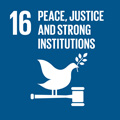- Docente: Marco Albertini
- Credits: 8
- SSD: SPS/09
- Language: Italian
- Teaching Mode: In-person learning (entirely or partially)
- Campus: Bologna
- Corso: Second cycle degree programme (LM) in Media, Public and Corporate Communication (cod. 5703)
-
from Sep 19, 2024 to Dec 05, 2024
Learning outcomes
The course aims to provide students with a toolkit – consisting of theoretical frameworks, conceptual tools, and methods – to analyze the increasing amount of information and communication flows available in digital format. By the end of the course, the student: (i) knows the main characteristics of the digital traces created by communicative processes, interactions between people, and relationships between people, the environment, and technological tools; (ii) is able to choose and use appropriate theoretical and analytical frameworks for the analysis of information, data, texts, and digital images; (iii) knows and uses the main techniques for analyzing information, texts, data, and digital images; (iv) can design market or academic research using techniques and tools specific to the digital era; (v) knows and can manage the ethical aspects related to the collection and use of digital data.
Course contents
The course is divided into two parts:
(i) In the first part of the course, the main theoretical and methodological aspects of social research in the digital age will be introduced, such as the definition of digital trace, the salient characteristics of digital traces, and the main research strategies used to exploit the opportunities offered by computational social sciences (including experiments and mass collaborations). This first part of the course (16 hours) will alternate between lectures based on the adopted textbooks and lectures in which the instructor will present specific studies that use the approaches discussed. Students are required to read the presented studies in advance and actively participate in the discussions.
(ii) In the second part of the course, the main methodological frameworks, techniques, and tools related to the collection and analysis of digital textual contents, with particular attention to those produced in the context of public communication, will be introduced. Basic text mining methods and tools will be presented, including the use of specific software.
Depending on the number of students attending the course, two separate groups of students may be formed, or a single group that will alternate between (a) lectures, (b) students' presentations and discussion of articles that use text mining methods and tools, and (c) laboratory sessions where exercises on text collection (including web scraping), the structuring of retrieved data and textual information, textual contents manipulation and analysis, and results presentation will be carried out using specific software (e.g., specific R packages).
Readings/Bibliography
The main textbooks utilized in the course are:
Grimmer J, Roberts M. E. e Stewart B. M. (2022) Text as data. A New framework for machine learning and the social sciences. Princeton University Press
Salganik M J. (2020) Bit by Bit. La ricerca sociale nell’era digitale. Il Mulino. [versione on line gratuita in inglese https://www.bitbybitbook.com/en/]
Silge J. e Robinson D. (2017) “Text mining with R. A tidy approach”. O’Reilly. https://github.com/dgrtwo/tidy-text-mining
Additional readings are available on virtuale.unibo.it
Teaching methods
lectures; students' presentations, data lab
Assessment methods
ATTENDING STUDENTS
(active participation in at least 80% of the classes)
For attending students, the assessment will be based on: (i) 20% active participation in discussions, presentations, and in-class exercises; (ii) 30% presentation of an article, agreed upon with the instructor (in case of a very large number of attending students, the presentation may be replaced by a take-home assignment); (iii) 50% a final paper, based on data/text analysis, on a topic and data set agreed upon with the instructor (submission of all materials and elements necessary to replicate the analyses will also be required). The paper length should be a maximum of 3000 words (excluding tables, figures, and references). The paper and the material for replicating the analyses must be submitted within 6 weeks after the end of the course.
NON-ATTENDING STUDENTSFor non-attending students, the assessment will be based on: (i) 50% written exam on the course program; (ii) 50% a paper, based on data/text analysis, on a topic and data set agreed upon with the instructor (submission of all materials and elements necessary to replicate the analyses will also be required). The paper length should be a maximum of 3000 words (excluding tables, figures, and references) and must be submitted to the instructor via e.mail at least 10 days before the exam date.
Teaching tools
virtuale; software R and R-Studio
Office hours
See the website of Marco Albertini
SDGs




This teaching activity contributes to the achievement of the Sustainable Development Goals of the UN 2030 Agenda.
